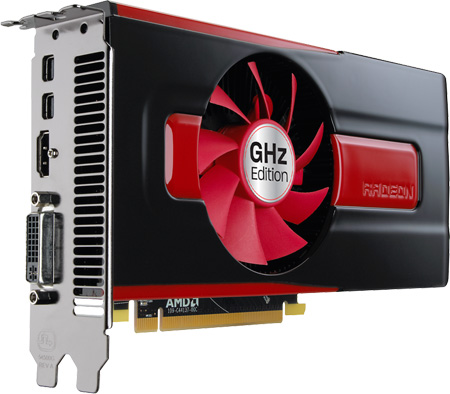Radeon R7 250X Review: Reprising Radeon HD 7770 At $100
AMD's name might be new, but we're already intimately familiar with its Radeon R7 250X (formerly known as the Radeon HD 7770). Can AMD take an old piece of hardware and turn it into something you want to spend money on in 2014? Let's have a quick look...
AMD's Radeon HD 7770 Becomes The R7 250X
Except for the Radeon R9 290-series cards, sporting AMD's Hawaii GPU, all of the other Radeon R7 and R9 boards we've seen are re-branded versions of the Radeon HD 7000 family. The Radeon R9 280X falls between the Radeon HD 7970 and 7970 GHz Edition. The Radeon R7 270 and 270X are based on the Pitcairn GPU. The Radeon R7 260X hosts the same graphics processor as the Radeon HD 7790.
Clearly, the company feels that the first-generation GCN graphics cards still have a lot to offer, especially with a handful of clock rate tweaks. We wouldn't necessarily disagree; the Radeon line-up offers a viable spectrum of performance, from the entry-level Radeon R7 240 to the flagship Radeon R9 290X.
We'd obviously prefer to be testing genuinely new hardware, rather than re-badged versions of old models. With that said, there seems to be a formula for making already-seen graphics cards more successful: increase performance and reduce price. We saw this from Nvidia's GeForce GTX 770 which, at launch, was essentially a highly overclocked GeForce GTX 680 with a $50 price cut. Even more impressive was AMD's Radeon R9 280X, which surfaced looking a lot like an overclocked Radeon HD 7970 at its core, yet came to market $150 cheaper than the product it replaced. Of course, the R9 280X jumped to $470 shortly thereafter, while the GTX 770 fell to $320, but that's another story...
With all of that in mind, when AMD told us that it was re-badging the Radeon HD 7770 as a "new" Radeon R7 250X, we were really hoping the company would increase clock rates and drop the price so we could get excited about it. Disappointingly, the frequencies aren't changing, though AMD claims pricing should fall to $100 (as of this writing, there is no online availability to confirm).
| Header Cell - Column 0 | GeForce GTX 650 Ti | Radeon R7 250 GDDR5 | Radeon HD 7770 / Radeon R7 250X | Radeon R7 260 | Radeon R7 260X |
|---|---|---|---|---|---|
| Shaders | 768 | 384 | 640 | 768 | 896 |
| Texture Units | 64 | 24 | 40 | 48 | 56 |
| ROPs | 16 | 8 | 16 | 16 | 16 |
| Process Technology | 28 nm (Kepler) | 28 nm (GCN) | 28 nm (GCN) | 28 nm (GCN) | 28 nm (GCN) |
| Core/Boost Clock | 925 MHz | 1000/1050MHz | 1 GHz | 1000 MHz | 1100 MHz |
| Memory Clock | 1350 MHz | 1150 MHz | 1125 MHz | 1500 MHz | 1625 MHz |
| Memory Bus | 128-bit | 128-bit | 128-bit | 128-bit | 128-bit |
| Memory Bandwidth | 86.4 GB/s | 73.6 GB/s | 72 GB/s | 96 GB/s | 104 GB/s |
| Graphics Memory | 1 or 2 GB GDDR5 | 1 or 2 GB GDDR5 | 1 or 2 GB GDDR5 | 1 or 2 GB GDDR5 | 1 or 2 GB GDDR5 |
| Power Connectors | 1 x 6-pin | N/A | 1 x 6-pin | 1 x 6-pin | 1 x 6-pin |
| Maximum TDP | 110 W | 60 W | 80 W | 95 W | 115 W |
| Newegg Price Range | $110-$180 | $90 to $133 | Radeon HD 7770:$110-$170 | $125-$140 | $130 to $150 |
| Typical Newegg Price | $130 | $90 | Radeon HD 7770:$110Radeon R7 250X:$99 MSRP | $132 | $130 |
A $100 mark sounds really nice compared to the Radeon HD 7770's $160 when it launched. But it looks a lot less impressive after a look on Newegg. The 7770 has shown up for as little as $100, although the current average lands around $110. If the the R7 250X can keep that figure down at $100, we'll certainly take the discount. Though, again, it's not something we're going to get excited about.
To be frank, if I didn't think that the Radeon HD 7770 was such an important mainstream graphics card in the first place, I would have probably posted a small news item about the name change and continued on with my work. But in my opinion, the HD 7770 (and now R7 250X) is the most important budget-oriented graphics card available. At $110, it's the cheapest option that lets you play most games comfortably at 1920x1080 with low to medium detail settings.
If you're interested in the technical aspects and features of AMD's Cape Verde GPU, check out AMD Radeon HD 7770 And 7750 Review: Familiar Speed, Less Power. Today's story focuses on gaming performance and value calculations. So, let's get on with the benchmarks.
Get Tom's Hardware's best news and in-depth reviews, straight to your inbox.
Don Woligroski was a former senior hardware editor for Tom's Hardware. He has covered a wide range of PC hardware topics, including CPUs, GPUs, system building, and emerging technologies.
